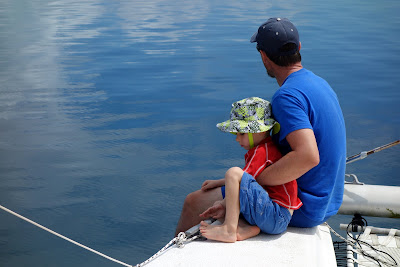Kotowa Coffee Plantation, Boquete, Panama
Boquete, Panama, is sometimes called the Napa Valley of coffee, as it's known for producing some of the world's finest coffee. Its "eternal spring" climate combined with rich, volcanic soil and the proper altitude makes it ideal for growing coffee. We couldn't pass up the chance to tour a coffee plantation while we were in Boquete. We booked the tour through Boquete Tree Trek, and it ended up being a good deal since they didn't charge for the kids. They provided transportation from town up to the plantation, high in the hills above Boquete. We rode in the back of a canopied truck, bouncing along a deeply rutted, rocky road through thick jungle. We arrived at the plantation and were treated to a gorgeous view of the valley beneath us while more verdant mountains rose above. The air was clean and cool, while clouds raced by in a brilliant blue sky. The weather shifted rapidly from warm and humid one moment to cool and drizzly the next. Come, walk with us...
|



















































